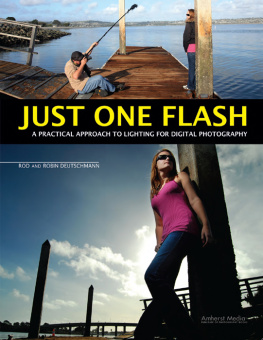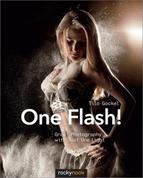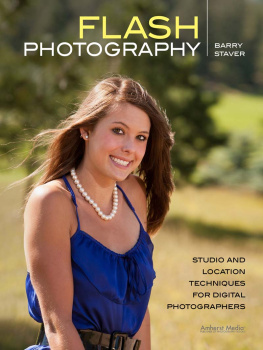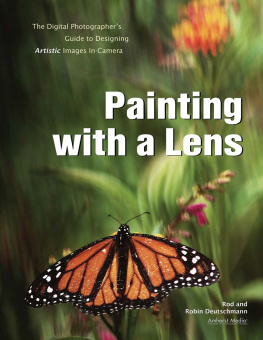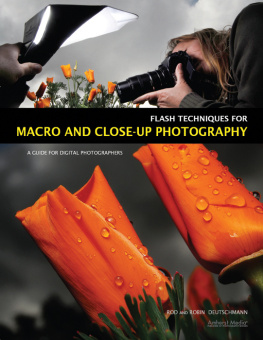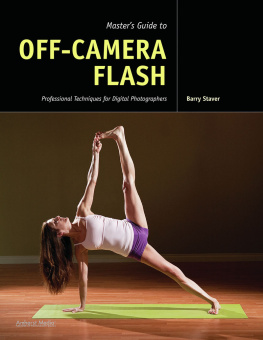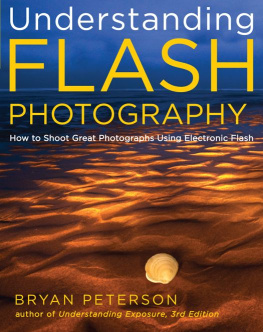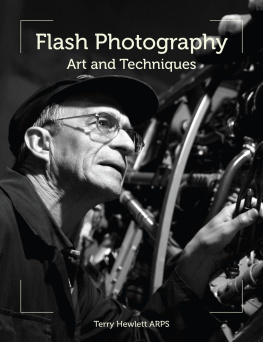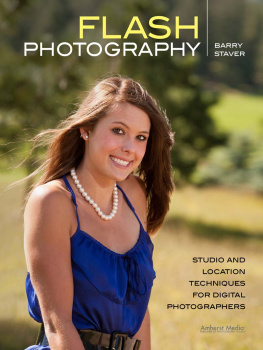Acknowledgments
There is nothing more satisfying than having the opportunity to share your passion with those you love. With this in mind, we extend our deepest gratitude to both Holly Kidd and Alexis Deutschmann for their willingness to put on a smile under any condition. Their participation in the making of this book was invaluable.
We also thank Jacob, Ryan, Tara, and Jay for their supportas well as the many In Focus Learning Center (IFLC) students whose quest for the truth has pushed us along the path to perfecting our own skills and techniques. This experience has enriched our lives immensely. Thank you for sharing it with us.
Copyright 2011 by Rod and Robin Deutschmann.
All rights reserved.
All images by the author unless otherwise noted.
Published by:
Amherst Media, Inc.
P.O. Box 586
Buffalo, N.Y. 14226
Fax: 716-874-4508
www.AmherstMedia.com
Publisher: Craig Alesse
Senior Editor/Production Manager: Michelle Perkins
Assistant Editor: Barbara A. Lynch-Johnt
Editorial Assistance from: Chris Gallant, Sally Jarzab, John S. Loder
ISBN-13: 978-1-60895-250-2
Library of Congress Control Number: 2010904496
Printed in Korea.
10 9 8 7 6 5 4 3 2 1
No part of this publication may be reproduced, stored, or transmitted in any form or by any means, electronic, mechanical, photocopied, recorded or otherwise, without prior written consent from the publisher.
Notice of Disclaimer: The information contained in this book is based on the authors experience and opinions. The author and publisher will not be held liable for the use or misuse of the information in this book.
| Check out Amherst Medias blogs at: | http://portrait-photographer.blogspot.com/
http://weddingphotographer-amherstmedia.blogspot.com/ |
Table of Contents







About the Authors
R od and Robin Deutschmann have been teaching people to be artists with their cameras for years. Taking a practical approach to modern photography, the duo strips the nonsense from the facts and the hype from the truth. They believe that creativity lies in the artists soul and not his camera bag. Touting the advantages of manual control, they offer a fresh view of photography that rebels against the norm. Their innovative approach and down-to-earth style have garnered them a loyal following of Southern California photographers. In books like Off-Camera Flash Photography and Multiple Flash Photography (both from Amherst Media), they are now bringing their unique vision and perspective to everyone. Rod and Robin are award-winning, fine-art photographers and individual recipients of a 2007 Thomas Jefferson Award. Visit them at www.facebook.com/IFLCSanDiego.

Rod Deutschmann.

Robin Deutschmann.
1. A Unique Vision
Creating art with a flash has little to do with the flash itself. Its more about the artist and his
determination to bring a unique vision to life.
P hotography is not about capturing how something looks, its about sharing with others how that something makes you feel. Its about expressing an emotion and creating a feeling. The flash is simply one tool (of many) that allows it to happen.
Epiphany
There are certain instances in every photographers life that prove more important than othersthings we remember as turning points in our careers. These usually have nothing to do with any photos weve taken. Rather, they revolve around a specific moment in time when our vision as an artist expanded.
Usually, our first epiphany comes when we take full manual control of our camera and realize that auto-anything cant get us the image we envision. The second comes the first time we add light with a flash. This enlightening moment shines as a beacon to our creative soul, lighting the way to true artistic freedom. Adding flash gives you choices. If something is dark, you can change it. If something is moving fast, you can freeze it. If your messagethe real reason for raising your camera in the first placeis hidden in shadow, you can illuminate it.
Usually, our first epiphany comes when we take full manual control of our camera.
This is powerful stuff that will change your photography forever. You can now go into any situation with confidence and direction, no longer having to hunt for the best lighting. If its not there, you can just make it yourself. No longer will you have to run from the shadows or settle for second best. With flash, you are in charge of the way the world is lit. If you dont like it, you can fix it.

A single off-camera flash was called into play, its use dictated by necessity. The day was cold and slightly overcast. The photographer, wanting to create a dramatic representation of what was before him, began by dialing in the aperture, shutter speed, contrast, and white-balance settings that best illustrated his vision. He started with his background, taking light away to bring out the mood. This had the consequence of sending his model into darkness as well. The flash was then called upon to fix the problem. Its power, angle of view, and direction were also manually adjusted. Keep in mind that the creation of photographic art cannot be done with an automated approach. The image looks nothing like how the scene appeared. That normal view is all the automatic settings (as illustrated in the image to the left) could have delivered.


